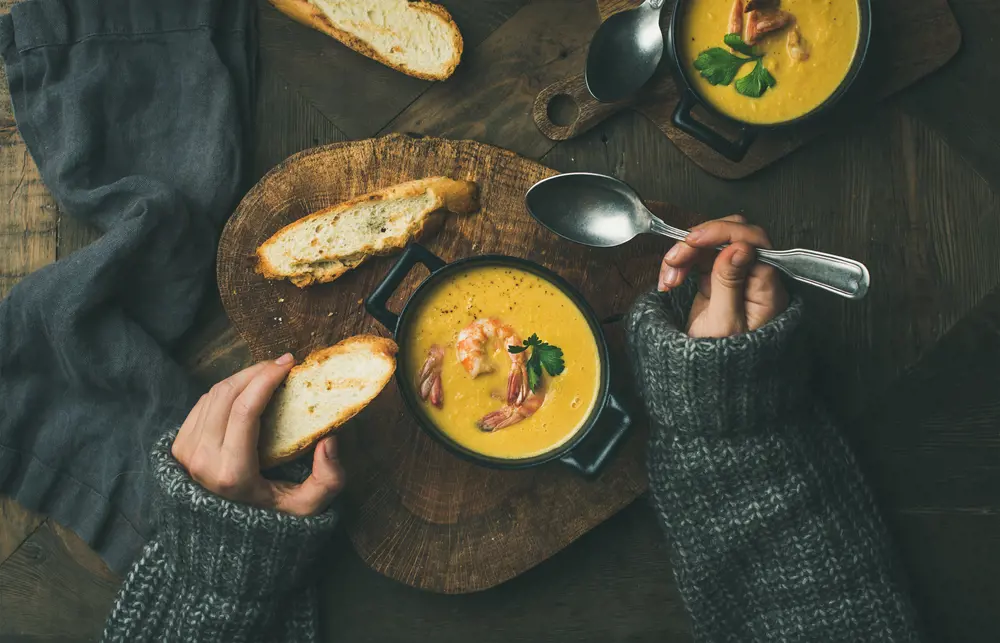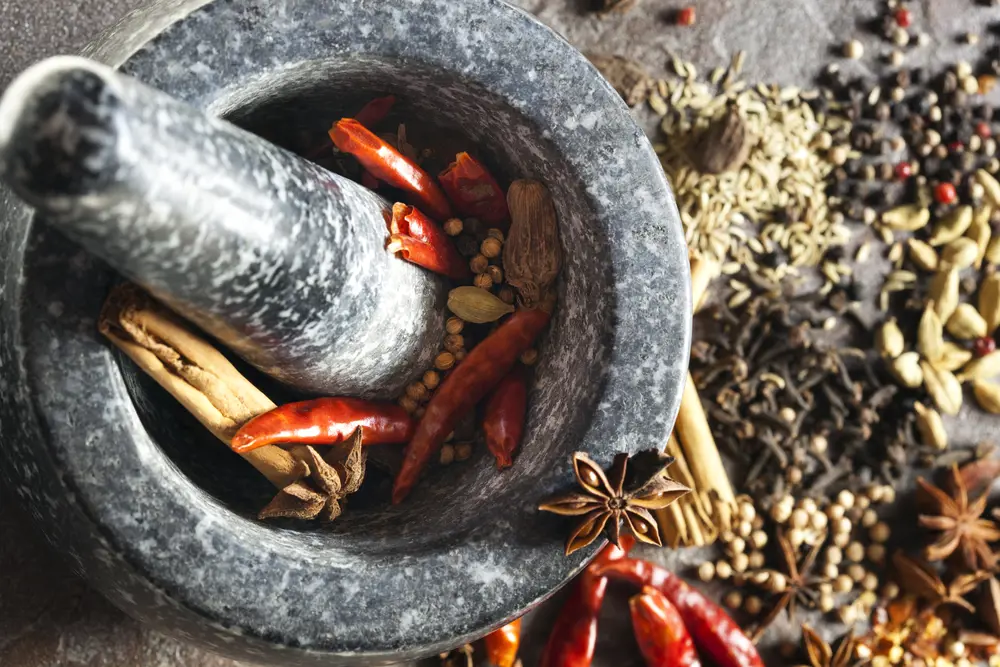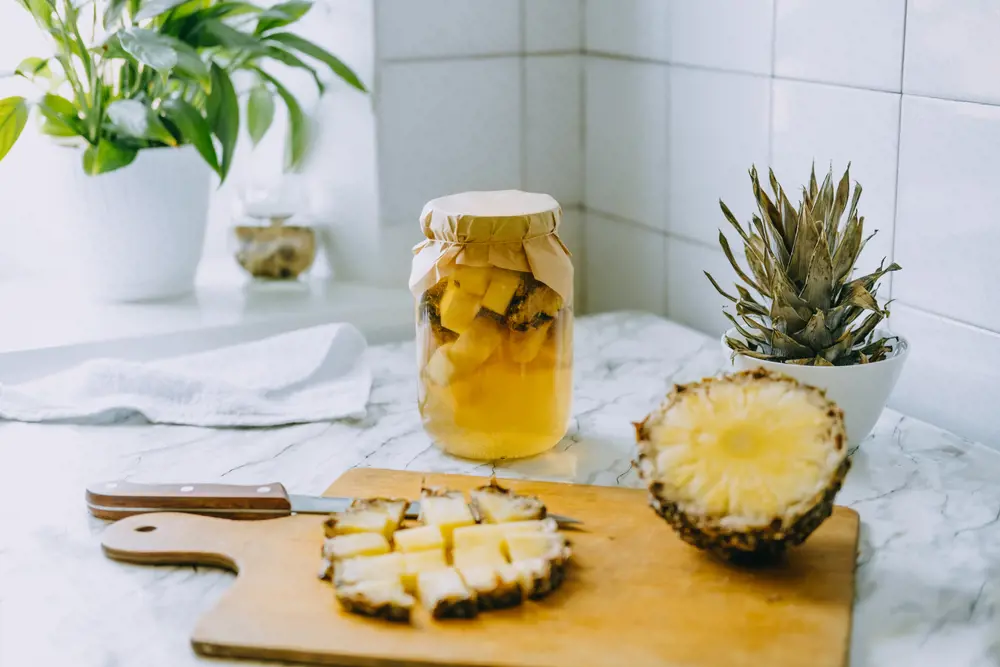
Can food help us stay warm and keep cool? A guide to understanding thermoregulation
When our bodies need to cool down or warm up the nutrients in certain foods can assist our body’s processes, with some foods well known to having thermogenesis effects
Nutrition
By Bio Island Nutrition Team
The human body has a normal temperature range between 36.1 – 37.2 degrees Celsius, anything outside of this we know is a sign that things may not be OK and we need to help our bodies maintain its regular temperature. Even within such a small margin our bodies are usually great at regulating our body’s temperature, even when it falls outside the normal temperature range, this is through the process of thermoregulation. So what role does food and nutrition play in thermoregulation?
What is Thermoregulation?
Thermoregulation is the body’s biological mechanism which allows your body to maintain its core internal temperature. The thermoregulation system includes the hypothalamus in the brain, sweat glands, skin and circulatory system. It’s one of your body’s most essential and important processes, and if you are unable to regulate your body’s temperature, it can start impacting several key organs and functions including:
- Heart
- Circulatory system
- Gastrointestinal Tract
- Lungs
- Kidneys
- Liver
- Brain
Extreme conditions can lead to hyperthermia (overheating) or hypothermia (temperature falls below safe levels) this can be life threatening.
What lowers or raises body temperature?
Your body uses a few mechanisms to ensure thermoregulation keeps our body’s functioning at an optimal temperature. The three processes used are:
- Efferent Responses – These are behaviours we utilise to regulate our temperatures, such as putting on a coat on a cold day or standing in the shade on hot days.
- Afferent Sensing – This is a system of temperature receptors around the body which detect if your core temperature is too hot or cold. This system relays this information to the hypothalamus in the brain.
- Central Control – The hypothalamus is the central control, it sends hormones around the body to alter the temperature to retain the ideal core temperature.
Once these signals have been received some of the ways our body responds to the heat or cold are:
Sweating: A response to overheating helps lower your skin temperature and reduce body heat.
Shivering: A response to cold temperatures, your muscles generate heat through the muscle contractions of shivering.
Changes to metabolism: As a response to heat your body may decrease metabolism and in a response to cold you may experience an increase in metabolism.
Dilating or Constricting Blood Vessels: Vasodilation, which is dilating blood vessels occurs when you are hot, this dilation allows more blood to flow through to the skin and loss heat to the environment. Vasoconstriction occurs when you are cold, where the blood vessels constrict allowing for less blood to flow through to the skin and conserve your core temperature.
There are some factors that may influence how thermoregulation works and may impair this process. Whilst not a complete list some of the most common factors which can influence thermoregulation are:
- Exposure to extreme conditions
- Infection and illness
- Age, particularly infants and elderly
- Medications
- Alcohol and drug use
- Certain endocrine and central nervous system disorders
Food, nutrition and thermoregulation
Food is the fuel for our body’s, so when our bodies need to cool down or warm up the nutrients in certain foods can assist our body’s processes, with some foods well known to having thermogenesis effects, such as ginger.
In cold weather ways you can support your body staying warm through food and nutrition are:
- Drink coffee and tea
Both contain caffeine, which increases your metabolism which in turn may help raise your body temperature. Tea has less caffeine content, however ginger tea is a great option, as ginger may stimulate thermogenesis, support digestive health and is a diaphoretic.
- Eat roasted vegetables
Sweet potatoes, butternut pumpkin and cauliflower are a source of fibre, meaning you take longer to digest them, feeling fuller and warmed up. These vegetables are also sources of vitamin A, vitamin C and potassium.
- Include iron rich foods into your day
Your body needs iron to carry oxygen around the body, a lack of iron may lead to anaemia which can contribute to symptoms such as cold hands and feet or feeling tired. Red meat, poultry and eggs contain haem iron, which is more readily absorbed by our bodies. Vegetarians and vegans can still consume plenty of iron rich foods, however they should be mindful of absorption inhibitors, such as phytates, which are mainly present in nuts, greens and grains.
- Enjoy a banana
Banana’s are a good source of key nutrients of B vitamins and magnesium, which support thyroid function and adrenal gland function. Both these glands help regulate your body’s temperature and maintaining their healthy function is important.
- Drink plenty of water
Regardless of the season you should consume plenty of water all year round. However, in wintertime people tend to drink less water due to the cooler weather and not feeling thirsty. Dehydration causes your core temperature to drop and having a good intake of water helps regulate your body’s core temperature.
During hot weather some foods you can incorporate in your day to help stay cooler are:
- Water rich foods
As mentioned above staying hydrated helps keep your body’s thermoregulation in balance, during hotter months foods such as watermelon, cucumber and tomatoes have high water content and will help keep you hydrated.
- Mint
That fresh feeling you get after having mint, is due to the menthol content in this herb. The influence of this can be felt across the body, as it triggers a cold sensitive receptor and resulting in a cool fresh feeling.
- Magnesium rich foods
A key nutrient for our body’s can assist in keeping the thermoregulation balance in a few ways. Magnesium has a ‘calming’ effect on the brain, and also supports muscle health. Both these areas of our body are used during the thermoregulation response and may help your body tackle the usually uncomfortable impacts of overheating.
- Electrolytes
Not directly linked to regulating your body’s heat, however just as important during hot temperatures, electrolytes need to be replenished when sweating. Electrolyte drinks contain nutrients like potassium and sodium, which help with cell signalling.
Other things you may be able to do to help warm your body or cool it down include certain exercises, wearing the right fabrics for the right environmental conditions and preparing for the conditions if you plan on spending time outside. You should always seek urgent medical attention if your symptoms persist.
This information does not take into account your personal situation and is general in nature. You should consider whether the information is appropriate for your needs and seek professional medical advice.
Always consult your healthcare professional before taking any supplements or if any concerns arise.






